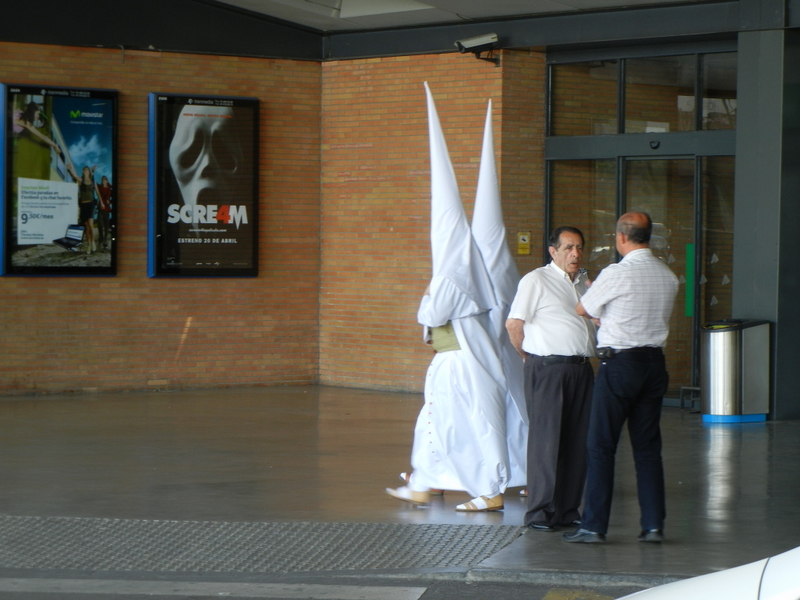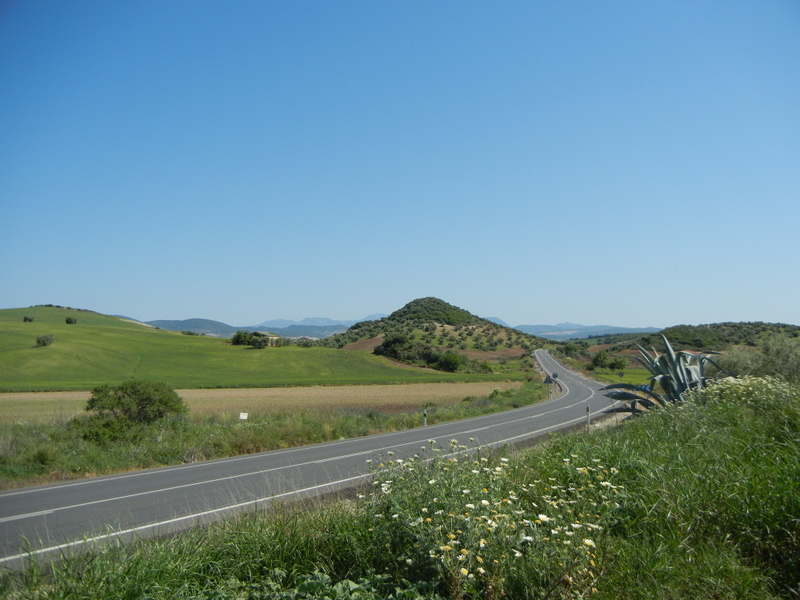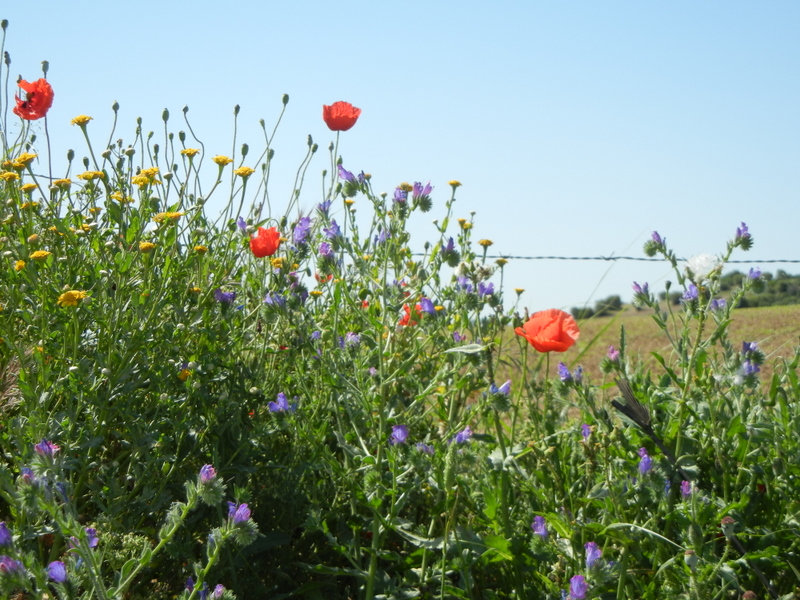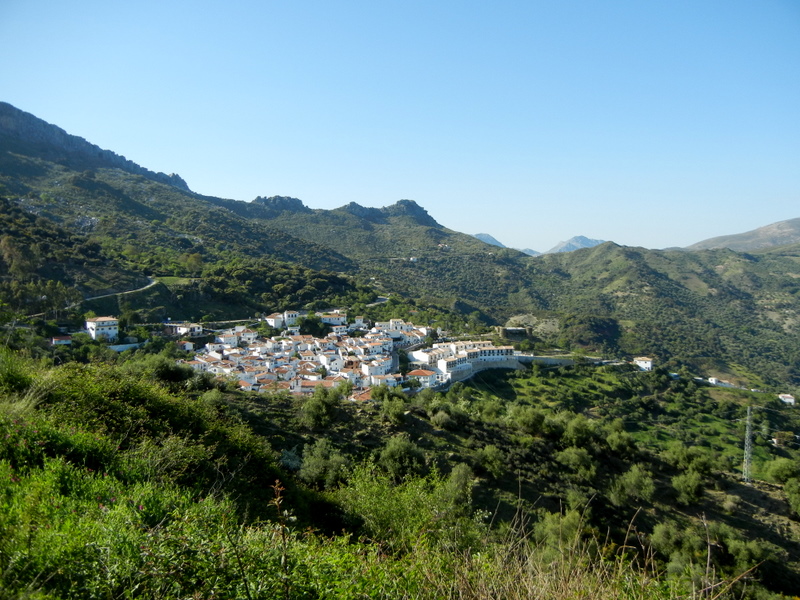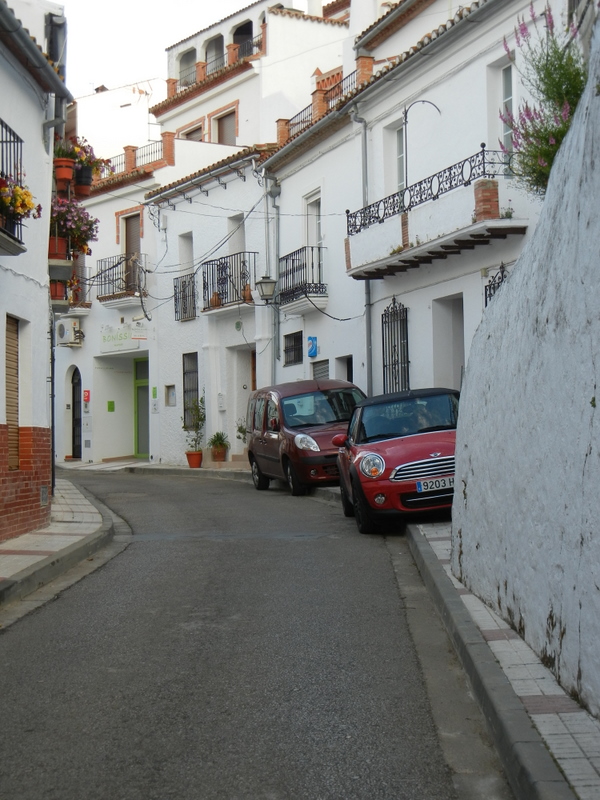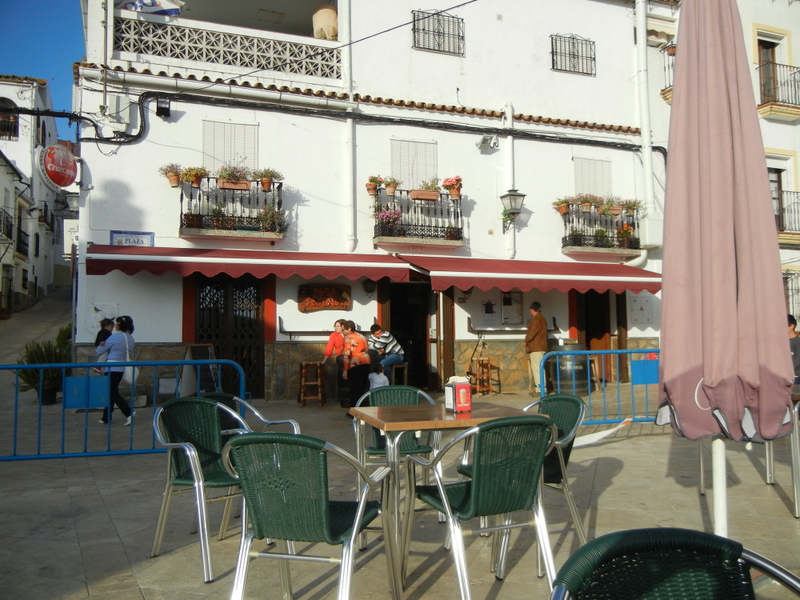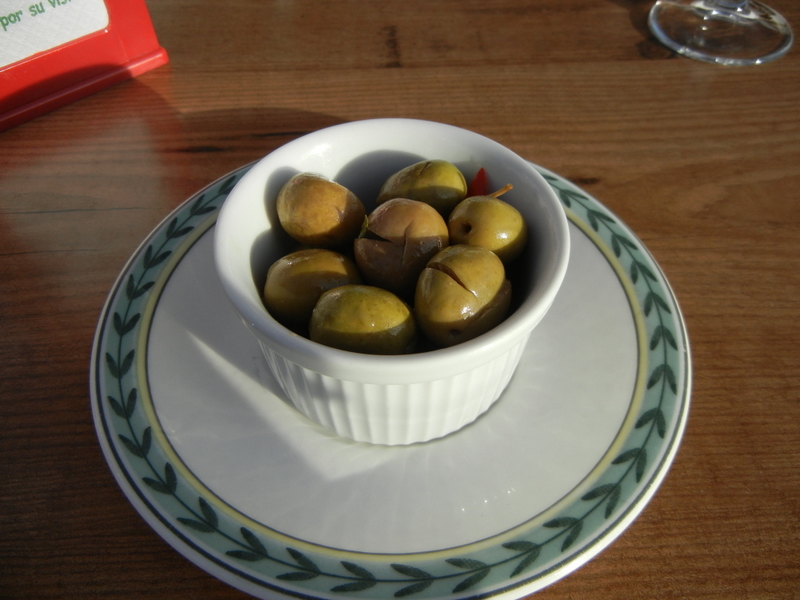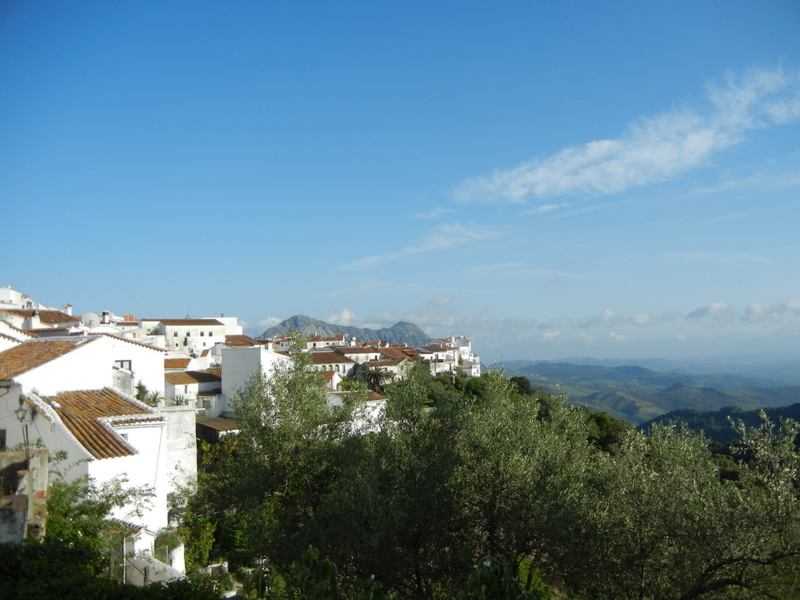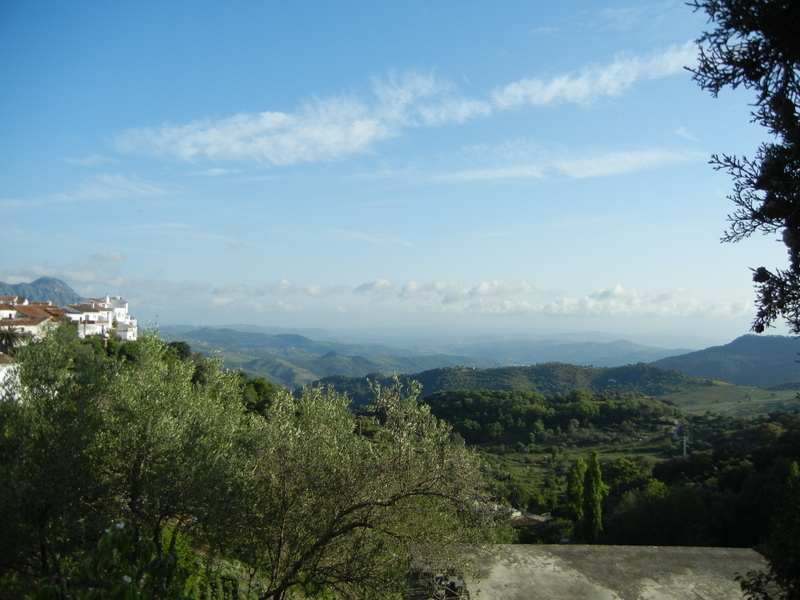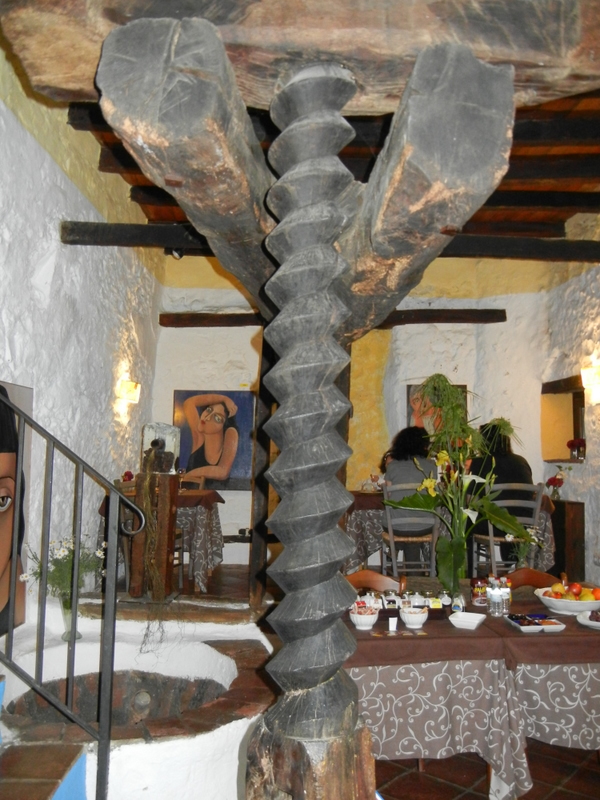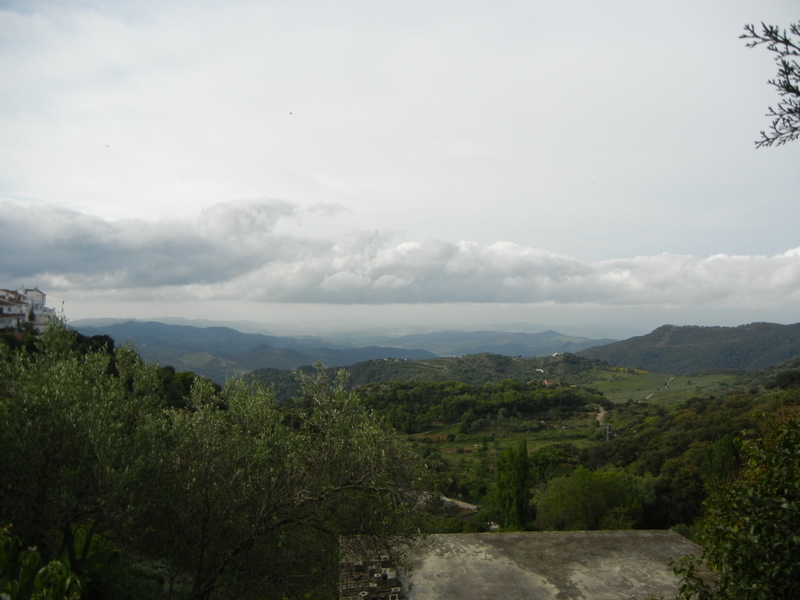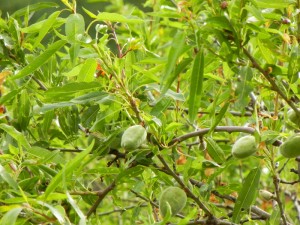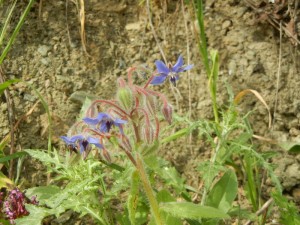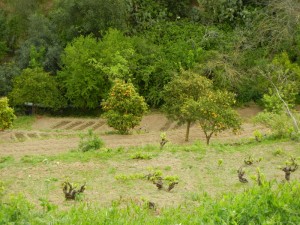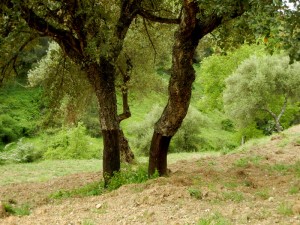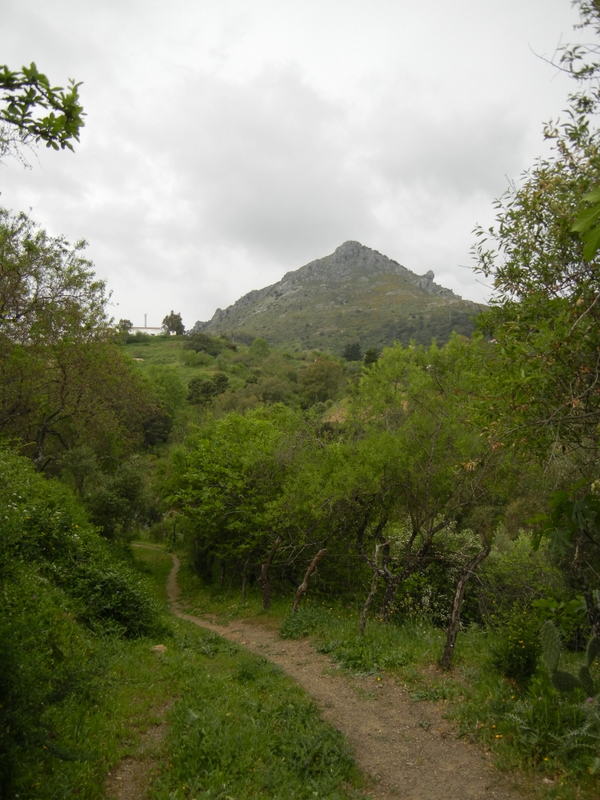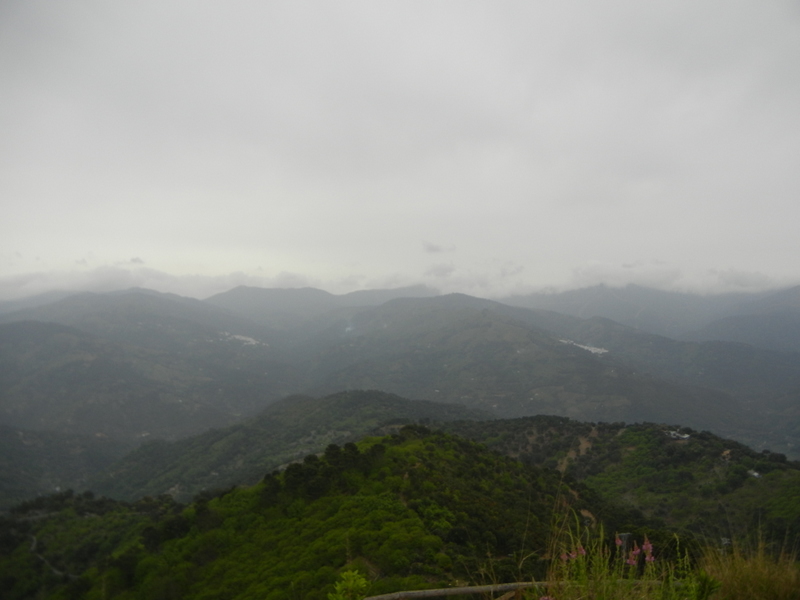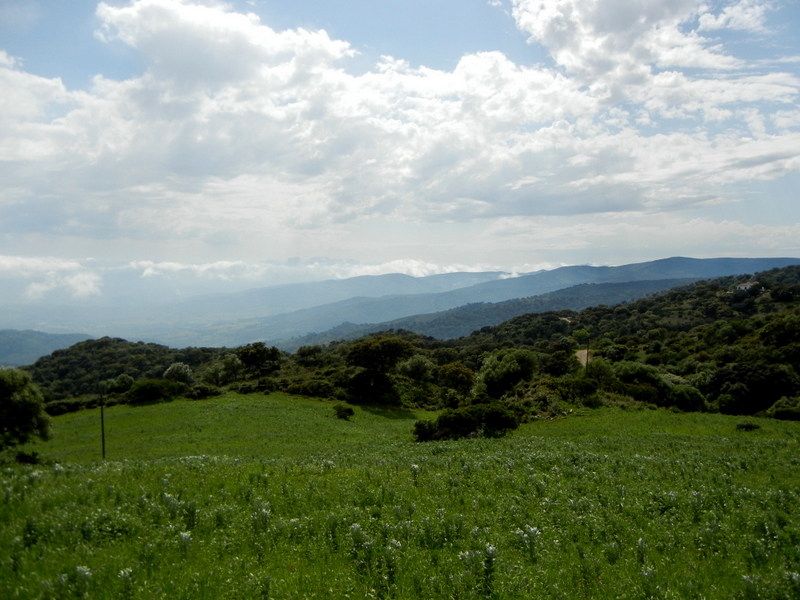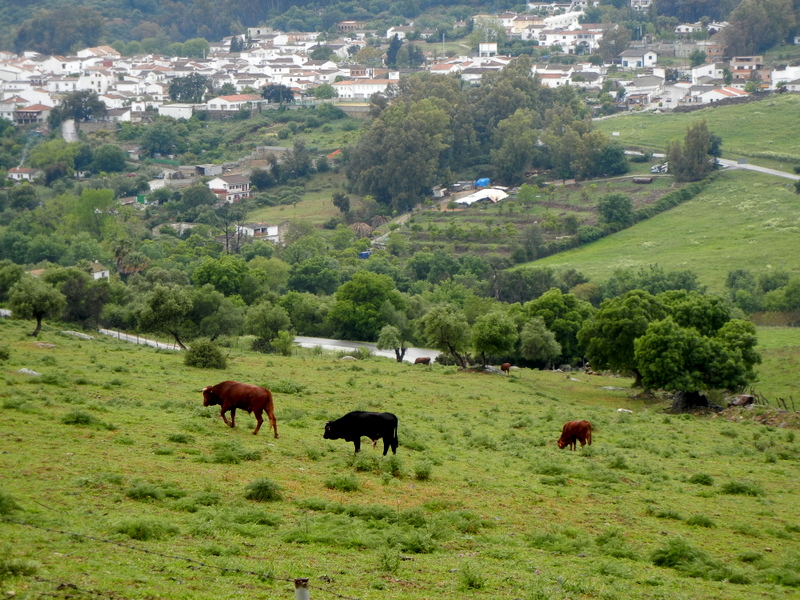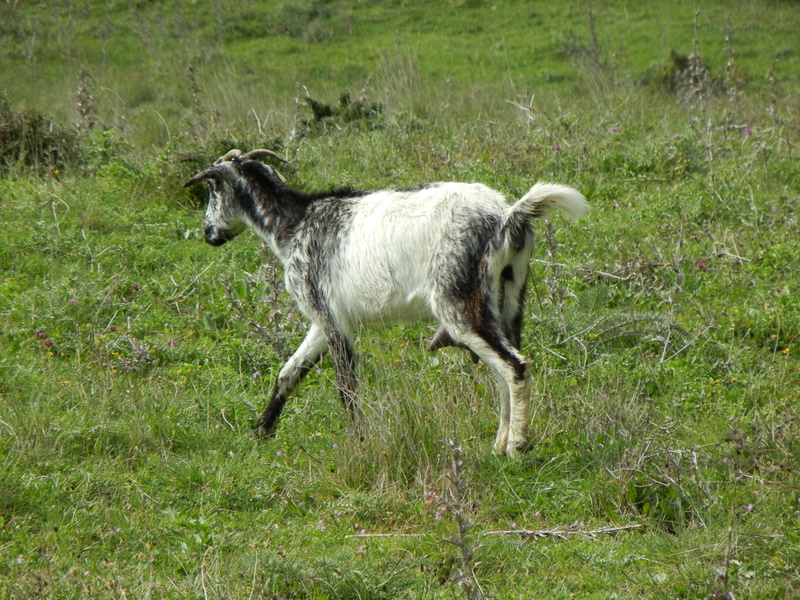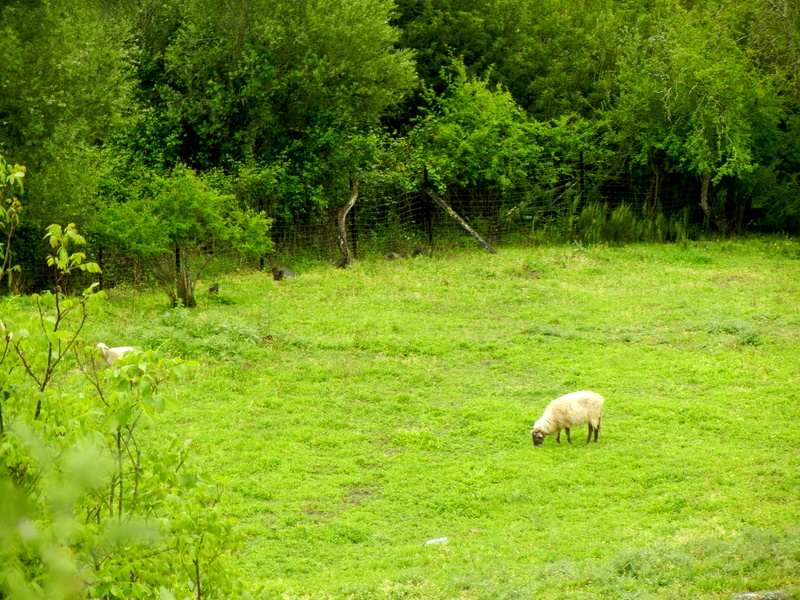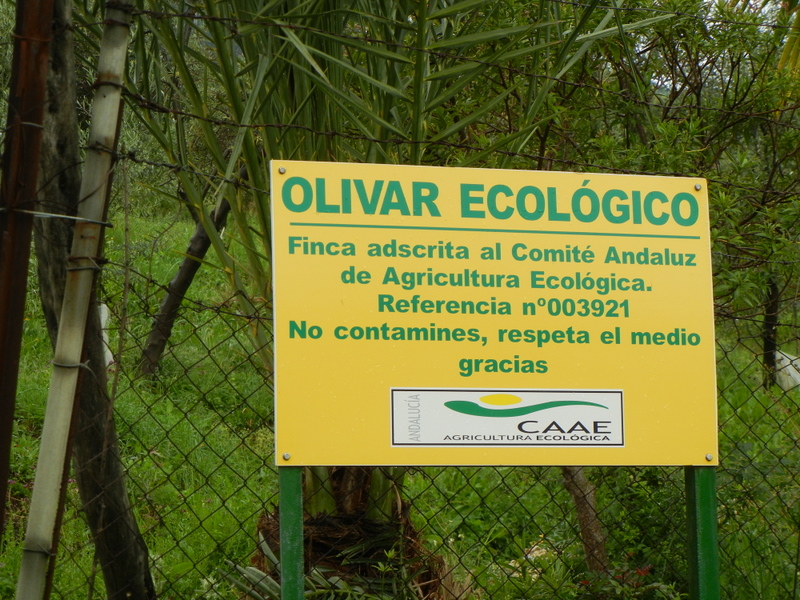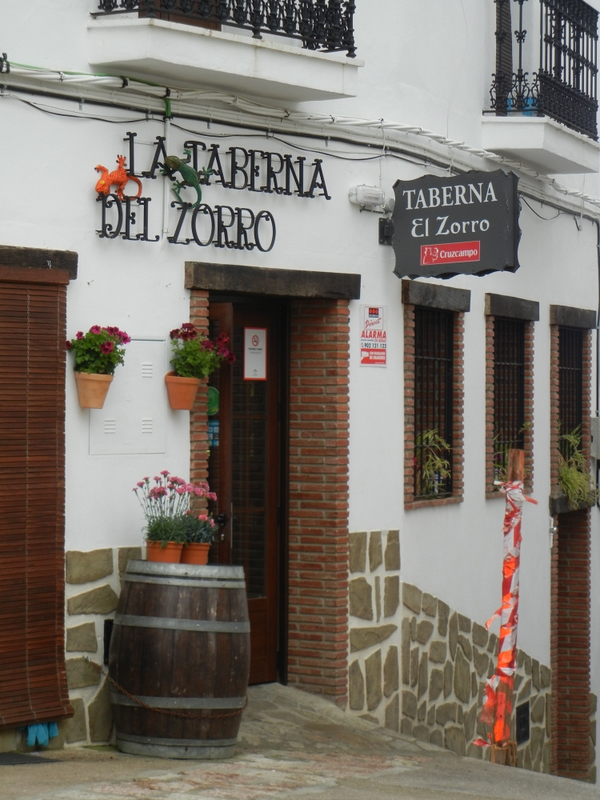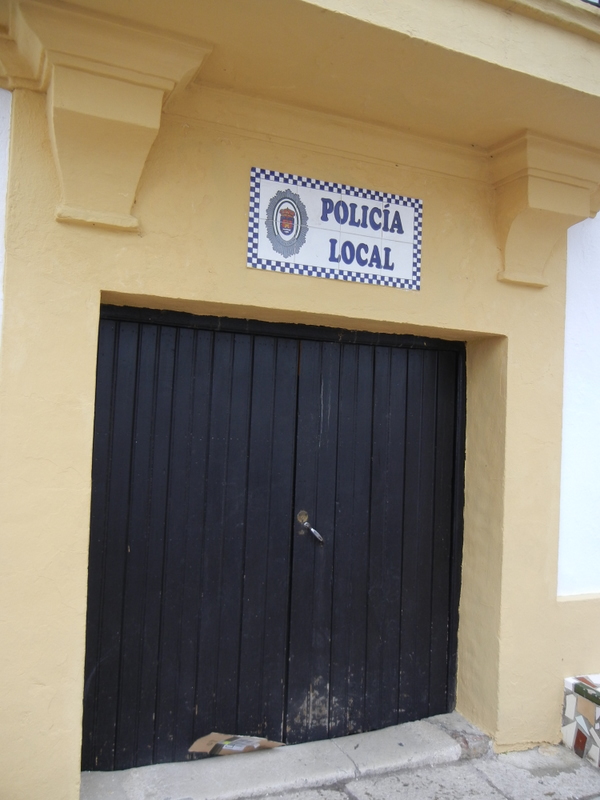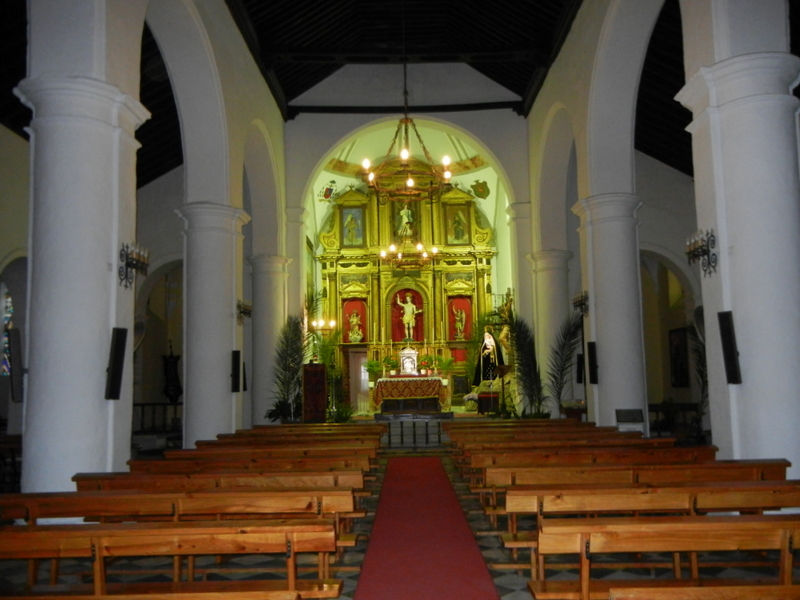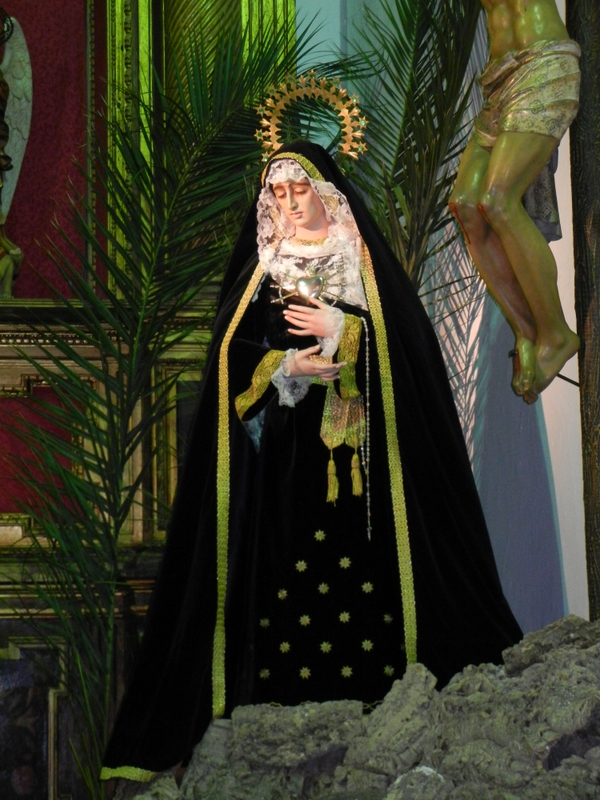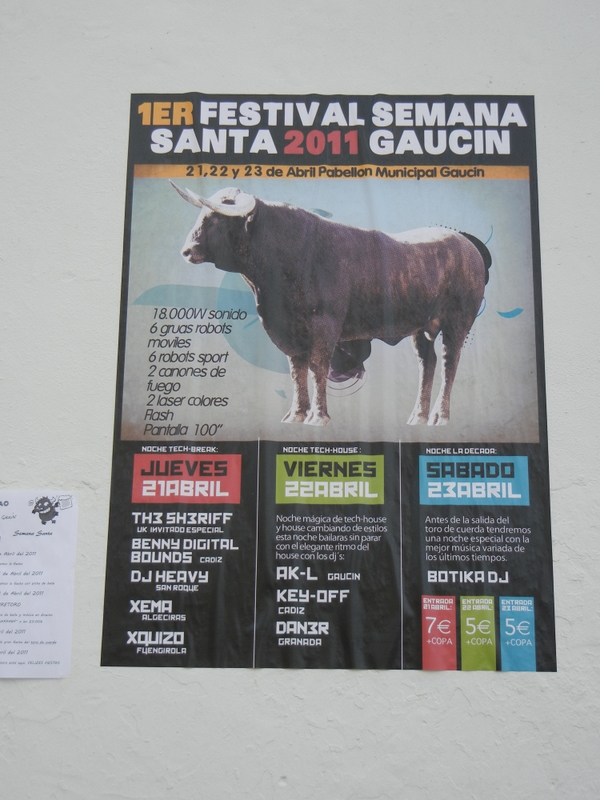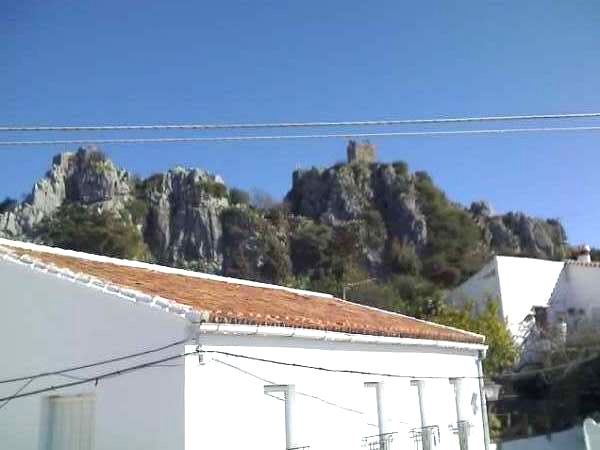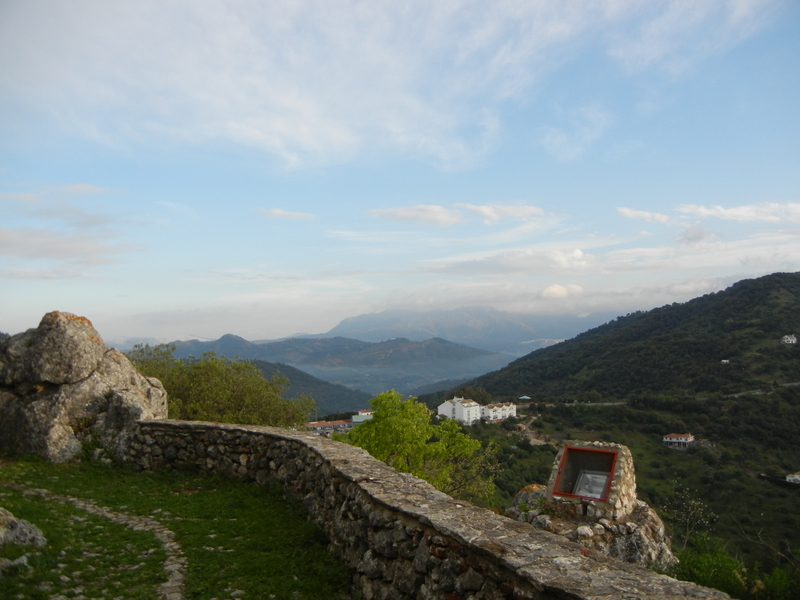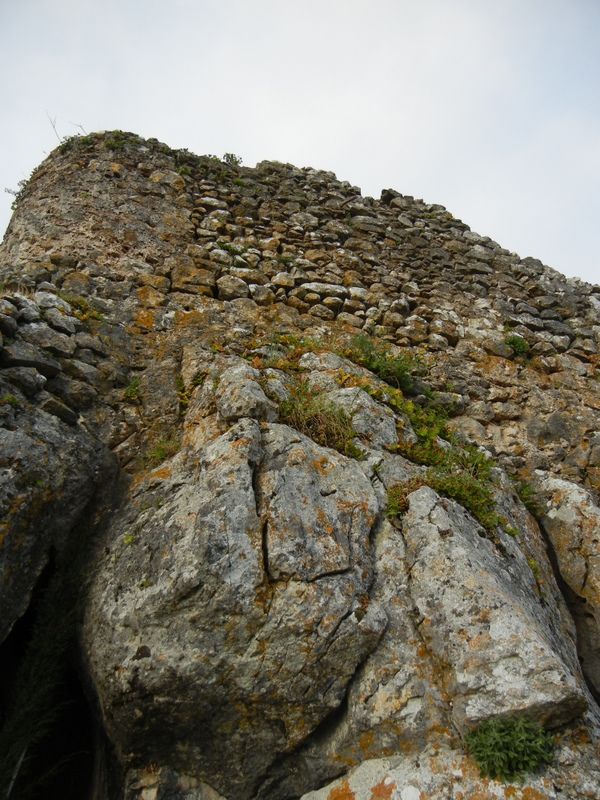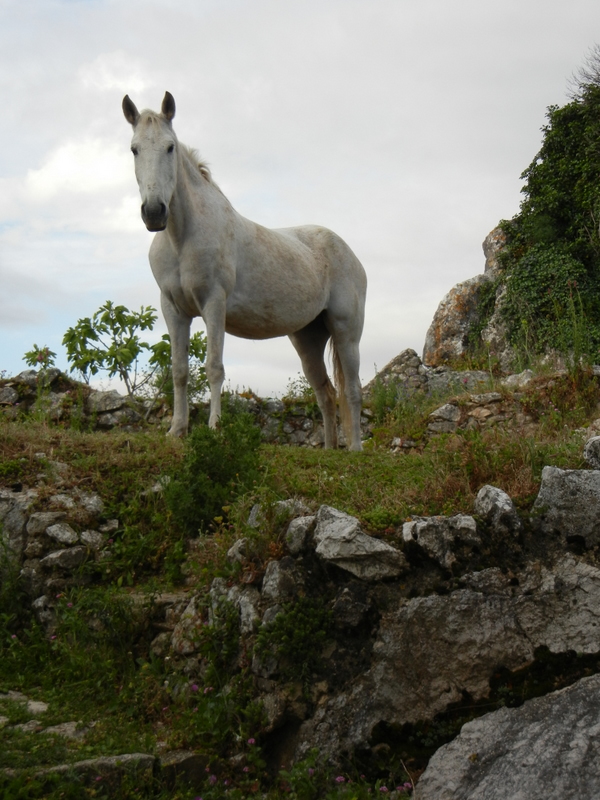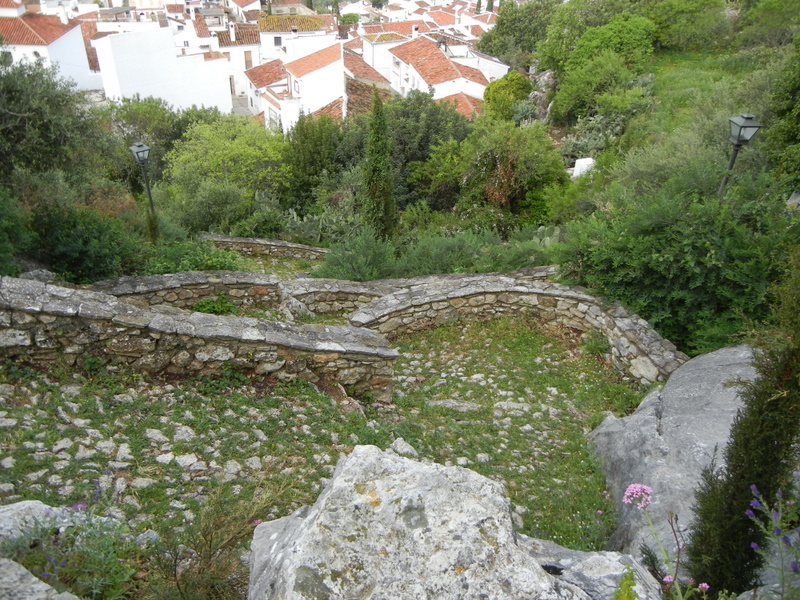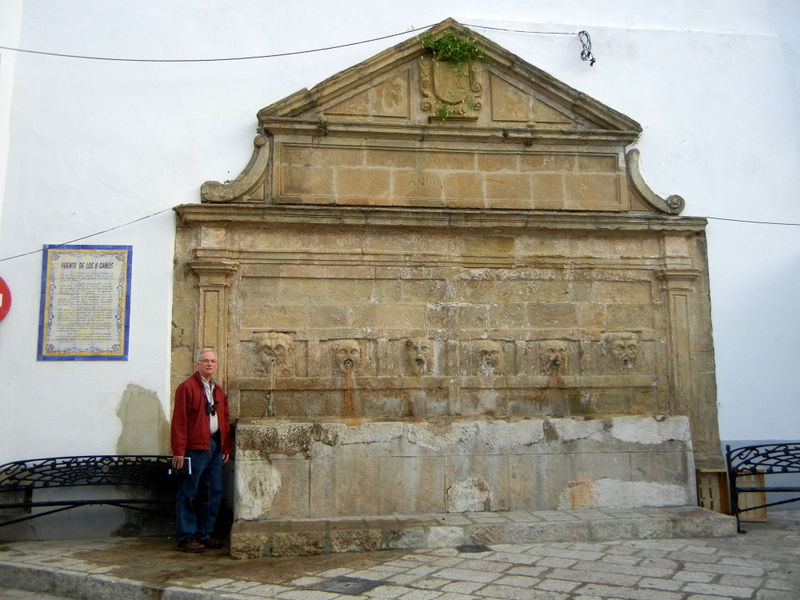Our first view of Sevilla during Holy Week came during our trip out of town to Guacin. I will say more about Semana Santa and this apparel in a later update.
Renting a car from Auriga Crown rental was quick and relatively painless, if you don’t count the insurance and fill-up fee. We are used to us and the car getting the once over on our way out the gate, but there was no one to report to that our car had a major dent in the passenger side door.
With our limited Spanish vocabulary, we were worried about navigating Spanish roads, but we needn’t have fretted. The roads were well marked and except for an unanticipated detour into Ronda en route to our destination, we found our way easily. (And, I am so glad to be partnered with a man who does not mind stopping to ask directions at the local petrol station!)
One tends to think of Spain as somewhat arid, but this section of Andalucía – and actually into Malaga Province – quickly becomes mountainous, moving from scrubby vegetation to lush, and adorned with pueblos blancos (white villages) that cling to the mountainsides like shimmering jewels in a crown. The road between them is reminiscent of the Going to the Sun Highway minus the guardrails and frequent turnouts, hence few pictures along our route! You will have to imagine the “ooos” and “ahhhs”! This part of Spain is also a central flyway for birds migrating up from Africa and we planned to do some birdwatching here.
Guacin is one of the southernmost pueblo blancos, sitting at about 630 km above sea level. On a clear day, you can view all the way to Morocco from the village. Derived from the Arab word, “guazan” (strong rock), the village is perched on the crest of the Sierra del Hacho, and due to its key strategic position was once a major Roman settlement. Many ex-pats and artists live here, as well as traditional Spanish families. The main business is tourism. The streets are as narrow if not narrower than in Cordoba. We saw why our car had a dent and realized every car we looked at had similar scrapes and dings. If you want to know how narrow, think of any movie filmed (or stage filmed) in a European city that has car chases and pedestrians jumping back into doorways as the cars scream by! That was us in Cordoba and Guacin!
Once we managed to rouse the innkeeper at La Fructosa and figured out where in town to park the car (not on the street!), we headed out to the only restaurant open that evening: a patio setting for tapas once again, with the freshest possible olives and mediocre red wine. It started to get chilly so we moved indoors. I engaged our server about the FC Barcelona vs. Real Madrid soccer match we had seen on TV the night before and the second glass of wine was the ‘good stuff’. Maybe he subscribes to the Cana method. (The Spanish are near to fanatic about their soccer and posters of the World Cup winning team are posted in most of the train stations!)
We kept our binoculars handy to see the passing Griffon Vulture, but were not rewarded. So it was off to sleep, dreaming about seeing Africa from our bed, and hoping for good luck in birding the next day.
La Fructosa, formerly the 3 story Pensión La Española (early 20th century) has been restored by the current owners. The very lowest floor, where there is an ancient wine press that served for consumption by the original owner’s family and other locals, has been transformed into a restaurant open on the weekends but also where we had breakfast each morning.
This was the view the next morning.
We headed out on a hike, anyway, guided by a typewritten, two-page extremely detailed description we found in our room. For example: “Continue along the path, pass a rusting black and white sign “Ojo al tren” and you reach a sign “Via Pecuaria”. Here loop sharply to the right, cross the railway track then bear left and follow a narrow path between a fence on the left and brambles on the right.”
We guess it must have been a description written some time ago, with ensuing property and gate changes, as eventually where we were walking and what the paper said no longer matched! No matter, we enjoyed the cork trees, the views of El Hacho, the flowers, Red-legged Partridge, the fields of olives and oranges, and the walk.
If we had continued, we would have been caught in the drenching rain storm that continued for most of the rest of the day!
Based on a recommendation from a birding acquaintance, we drove the 15 km down to El Colmenar on the Rio Guadiaro, to see if we could find the vulture feeding station behind the railway station there. This road was even narrower and more winding than the one the day before—on the map it looks like a slinky ready to expand and is the sort that could bring on queasy stomachs! When I dared to look, the scenery was breathtakingly gorgeous!
We finally did see Griffon Vultures and a few other choice birds as well, not at the feeding station, but soaring up in the sky where they belong! That night, Monday, we found another restaurant open and had to go in, not only because it was the only one open but because of its name!
Which was, ironically, located right across from the police station!
Returning to our rural hotel, we found the local church and some signs going up for Semana Santa.
The next day it was on to Gibraltar. But not before we got up very early for a hike up to the old castle in Guacin. The Castillo del Aguila (Eagle’s Castle) dates from the Roman era and was later expanded by the Arabs into a fortress. It wasn’t open on Tuesday, but we thought the hike would make good exercise before breakfast. What a treat that was!
We even saw a black kite riding the thermals and a surprise when we reached the summit.
One last view of the village fountain, and we were on our way to Gibraltar.
We were holding our breath for good weather and bird-watching en route. And if birds weren’t in the market, then at least we would see the Rock, with the Mediterranean on the left and views to the Atlantic on the right!

